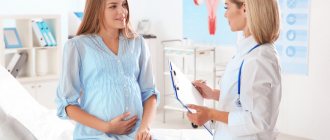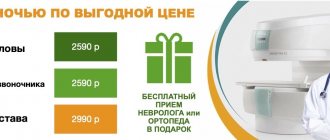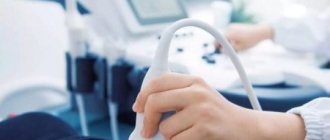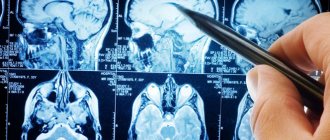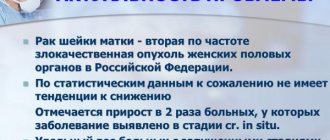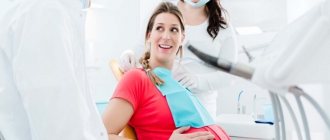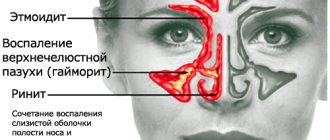A swab from the throat is taken for a standard bacteriological study in order to study the microbial composition and quantitative ratio of the microflora of the nasopharynx. This is a laboratory diagnostic method that allows you to identify pathogens of infectious and inflammatory diseases of the upper respiratory tract. To determine the etiology of the infection, it is necessary to conduct a bacteriological study of the discharge of the nose and pharynx for microflora.
Specialists refer patients with chronic rhinitis, tonsillitis and pharyngitis to a microbiological laboratory, where biomaterial is taken from the nose and pharynx with a sterile cotton swab and examined. Based on the results of the analysis, the specialist determines the causative agent of the pathology and its sensitivity to antibiotics.
Reasons and purposes of taking a smear for microflora from the throat and nose:
- Diagnosis of sore throat caused by beta-hemolytic streptococcus and leading to the development of severe complications - glomerulonephritis, rheumatism, myocarditis.
- The presence of Staphylococcus aureus in the nasopharynx, which provokes the formation of boils on the skin.
- Bacteriological seeding of clinical material for inflammation of the nasopharynx is carried out in order to exclude diphtheria infection.
- Suspicion of meningococcal or pertussis infection, as well as respiratory ailments.
- Diagnosis of stenosing laryngitis, mononucleosis, abscesses located near the tonsils includes a one-time analysis.
- Persons in contact with an infectious patient, as well as children entering kindergarten or school, undergo a preventive examination to identify bacterial carriage.
- A complete examination of pregnant women includes taking a swab from the throat for microflora.
- A swab from the throat and nose for staphylococcus is taken for preventive purposes by all medical workers, kindergarten teachers, cooks and grocery store clerks.
- A throat swab to determine the cellular composition of the discharge. The material to be studied is applied to a special glass slide. Under a microscope, a laboratory technician counts the number of eosinophils and other cells in the field of view. A study is being conducted to determine the allergic nature of the disease.
Patients are sent to the bacteriological laboratory to examine material from the nasopharynx in order to exclude or confirm a specific infection. The direction indicates the microorganism whose presence must be confirmed or refuted.
Microflora of the nasopharynx
The mucous membrane of the pharynx and nose is home to many microorganisms that make up the normal microflora of the nasopharynx. A study of the discharge of the throat and nose shows the qualitative and quantitative relationship of the microbes living in a given locus.
Types of microorganisms living on the nasopharyngeal mucosa in healthy people:
- Bacteroides,
- Veillonella,
- Escherichia coli
- Branhamella,
- Pseudomonas,
- Streptococcus matans,
- Neisseria meningitides,
- Klebsiella pneumonia
- Staphylococcus epidermidis,
- viridans streptococcus,
- Non-pathogenic Neisseria,
- Diphtheroids,
- Corynebacteria,
- Candida spp.
- Haemophilis spp.,
- Actinomyces spp.
In case of pathology, the following microorganisms can be detected in a smear from the throat and nose:
- Group A beta-hemolytic streptococcus
- Pneumococcus,
- S. aureus,
- Corynobacter diphtheria,
- Haemophilis influenzae,
- Neisseria meningitidis,
- Candida albicans
- Bordetella,
- Listeria,
- Branhamella catarrhalis,
- Acinetobacter baumannii,
- Enterobacteriaceae.
the staphylococcus found in the smear , its pathogenicity and staphylococcal infection at the link.
Indications for taking a throat swab
Indications for this procedure may include the following conditions and diseases:
- sore throat, occurring in acute form;
- chronic pathologies of the upper respiratory tract of an inflammatory nature;
- presence of suspicion of a malignant tumor;
- purulent sinusitis and rhinitis;
- otitis and other inflammatory diseases of the ears;
- chronic tonsillitis, prone to constant relapses.
Culture of mucus from the throat is performed for diphtheria, ARVI, whooping cough, and meningococcal infection. In general, there are many indications for conducting research.
As for contraindications, this procedure does not have any. It can be performed on any patient, including a pregnant woman and a child in the first months of life.
Preparing for analysis
In order for the analysis results to be as reliable as possible, it is necessary to correctly select clinical material. To do this, you should prepare.
Two weeks before collecting the material, stop taking systemic antibiotics, and 5-7 days before, it is recommended to stop using antibacterial solutions, rinses, sprays and ointments for topical use. The test should be taken on an empty stomach. Before this, it is forbidden to brush your teeth, drink water and chew gum. Otherwise, the analysis result may be false.
A nasal swab for eosinophils is also taken on an empty stomach. If a person has eaten, he must wait at least two hours.
Taking material
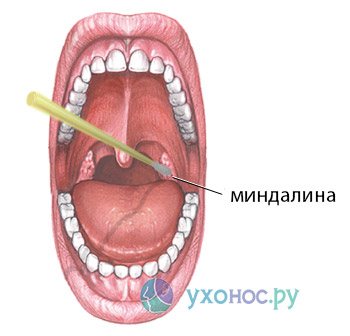
To take a nasal swab, you need to sit the patient opposite and tilt his head slightly back. Before the analysis, it is necessary to clear the nose of existing mucus. The skin of the nostrils is treated with 70% alcohol. A sterile swab is inserted alternately, first into one and then into the other nasal passage, turning the instrument and firmly touching its walls. The swab is quickly lowered into a test tube and the material is sent for microscopic and microbiological examination.
Indications for the procedure

A smear is taken to study the composition of the microflora of the nasopharynx, to identify the causative agent of the pathology, and its sensitivity to antibiotics.
In what cases is a smear prescribed:
- prolonged runny nose that does not go away for more than 7 days;
- allergy;
- frequent relapses of pharyngitis, tonsillitis, laryngitis;
- diagnosis of streptococcal sore throat;
- the presence of manifestations of infections caused by Staphylococcus aureus;
- if you suspect diphtheria, whooping cough, meningitis, fungal pathologies;
- tuberculosis;
- sinusitis, adenoiditis;
- mononucleosis, abscesses.
A throat swab is part of a preventive examination; the test is prescribed for children attending educational institutions, health workers, people who work with food or in preschool and school institutions.
A smear to determine the composition of the microflora of the ENT organs is prescribed to all pregnant women.
Preparation for collecting material
Compliance with the rules of preparation for taking a smear largely determines the reliability of the results.
Preparation rules:
- stop taking antibacterial drugs in the form of tablets for a week;
- 5 days in advance, stop using sprays, ointments, rinses with antibacterial and antiseptic effects;
- Before collecting material from the oropharynx, you should not eat, drink, chew gum, or smoke; if it is necessary to do an oral cavity analysis, it is contraindicated to brush your teeth.
Stop taking antibiotics a week before your test.
How to properly take a swab of both the throat and nose?
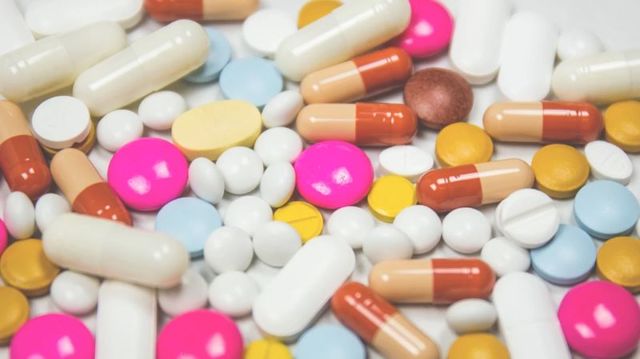
The reliability of the analysis is also affected by the professionalism of the medical personnel; if there are errors during the collection, storage and transportation of the biomaterial, the culture result will be unreliable.
Procedure technique:
- The patient opens his mouth wide and throws his head back.
- The nurse presses on the tongue with a sterile or disposable spatula and collects mucus and plaque from the mucous membranes of the pharynx and tonsil surfaces with a cotton swab.
- The resulting material is placed in a test tube with a nutrient solution, which allows the bacteria to remain viable during transportation.
- The resulting biomaterial is sent to the laboratory, delivery time is no more than 2 hours.
Taking a smear is a painless but unpleasant procedure; pressing on the tongue can provoke an attack of vomiting, especially if the material is taken from a child.
Before examining the nasal mucosa, mucus is removed, crusts are removed, and the skin of the nostrils is lubricated with medical alcohol. The patient tilts his head back a little, and a sterile swab is passed alternately along the walls of the right and left nasal passages. The samples collected in a test tube are sent to the laboratory.
Methods for studying biomaterial
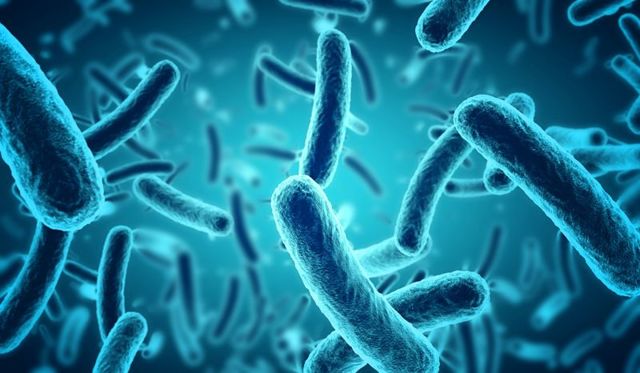
During microscopic examination, the resulting biomaterial is Gram stained and examined after treatment with immersion oils. The method allows you to identify gram-positive and gram-negative bacteria, coccal flora, and coccobacilli.
Bacteriological culture is one of the main diagnostic methods, since each microorganism can multiply only in a certain environment, at a comfortable level of pH and humidity; during the study it is important to maintain complete sterility.
Bacteriological culture is the main type of diagnostics for identifying pathogenic microorganisms
If an increase in microflora is detected, antibiotic sensitivity tests must be carried out; many microbes are able to quickly develop immunity to drugs - in the presence of ineffective therapy, severe complications develop.
A fingerprint smear is a specific analysis for studying the composition of cells in the nasal mucosa. The sample is applied to a glass slide, and the number of eosinophils and other particles is counted. The study is prescribed if you are predisposed to allergies.
If antibacterial therapy is ineffective, phage sensitivity tests are performed. The result allows us to select bacteriophages to eliminate the manifestations of infectious pathologies - these are modern antimicrobial drugs that cause the death of only certain types of bacteria.
Decoding the analysis results
About 50 beneficial microbes, representatives of saprophytic and opportunistic microflora live on the mucous membranes of each person; the study of discharge from the throat and nose makes it possible to determine the quantitative ratio and composition of etiologically significant microorganisms.
List of microbes
| Safe microorganisms: | Dangerous microorganisms |
|
|
The result is entered into the form, indicating the genus, type, number of microorganisms, and level of pathogenicity. After determining the type of pathogen, tests are carried out to determine the sensitivity of microbes to antibacterial agents and bacteriophages.
A negative result indicates the absence of fungi and pathogenic bacteria, which means that the infection is of viral origin. A positive result is observed in the presence of dangerous microorganisms, or the active growth of representatives of opportunistic microflora.
In terms of time, a bacteriological examination takes 5–7 days; in emergency cases, a rapid test is done to identify antigens to bacteria and fungi; the result can be obtained within half an hour.
What do increased indicators mean?
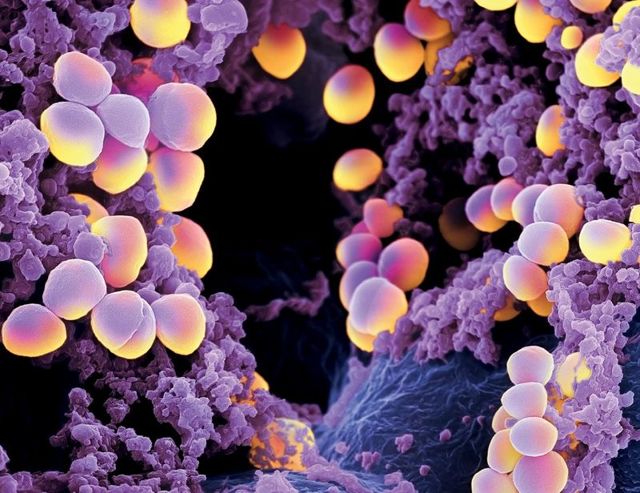
The presence of a large number of fungi and bacteria in a smear is a sign of the development of ENT diseases; each microorganism provokes certain pathologies.
Exceeding the norm of staphylococci is most often observed in children
What diseases are caused by pathogenic microorganisms:
- staphylococci - pharyngitis, tonsillitis, gingivitis, sinusitis, active growth of bacteria is most often observed in children and the elderly;
- streptococci - sore throat, scarlet fever, sinusitis;
- fungi of the genus Candida - oral candidiasis, often accompanied by complications that affect the organs of the respiratory system;
- pneumococci, neisseria - pneumonia, bronchitis, otitis media, osteomyelitis, diseases of the upper respiratory tract, oropharynx;
- diphtheria pertussis, normally there are no bacteria in the smear; if the result is positive, the concentration level of microbes is determined to make a conclusion about the degree of development of the pathology;
- hemolytic streptococcus - severe forms of sore throat, which almost always cause heart complications.
With indicators of more than 10*5–10*7 CFU/ml, the likelihood of developing inflammatory, infectious, purulent processes is maximum. The draining result is a very high content of pathogenic microbes, their number cannot be counted, it is observed in severe and advanced forms of the disease, and urgent antibacterial therapy is required.
A nasopharyngeal smear is an effective method for diagnosing diseases of the ENT organs, determines the type of causative agent of the pathological process, the stage of development of the disease, allows you to select effective methods of therapy and reduce the risk of complications.
Microscopic examination

The material to be examined is applied to a glass slide, fixed in a burner flame, Gram stained, and examined under an oil immersion microscope. Gram-negative or gram-positive rods, cocci or coccobacilli are detected in the smear, and their morphological and tinctorial properties are studied.
Microscopic signs of bacteria are an important diagnostic guide. If the smear contains gram-positive cocci, located in clusters resembling bunches of grapes, it is assumed that the causative agent of the pathology is staphylococcus. If the cocci stain positive for Gram and are located in the smear in chains or pairs, it may be streptococci; gram-negative cocci - Neisseria; gram-negative rods with rounded ends and a light capsule - Klebsiella, small gram-negative rods - Escherichia, Pseudomonas aeruginosa. Further microbiological examination is continued taking into account microscopic signs.
Inoculation of the test material
Each microorganism grows in its “native” environment, taking into account pH and humidity. Media can be differential diagnostic, selective, universal. Their main purpose is to provide nutrition, respiration, growth and reproduction of bacterial cells.
Inoculation of the test material must be carried out in a sterile box or laminar flow hood. The healthcare worker must wear sterile clothing, gloves, a mask and shoe covers. This is necessary to maintain sterility in the work area. In the box, you should work silently, carefully, ensuring personal safety, since any biological material is considered suspicious and obviously infectious.
A nasopharyngeal swab is inoculated onto nutrient media and incubated in a thermostat. After a few days, colonies of different shapes, sizes and colors grow on the media.
There are special nutrient media that are selective for a specific microorganism.
- The main medium for germs of the throat and nose is blood agar. This is a highly sensitive medium containing nutrients for saprophytic and pathogenic bacteria. Pneumococci and Staphylococcus aureus produce hemolysins and cause hemolysis of red blood cells. The hemolytic activity of microbes is the main pathogenicity factor that most pathogenic bacteria possess. The growth pattern, color and zone of hemolysis differ among microbes of different genera and species.
- Sabouraud's medium or thioglycollate medium is universal and suitable for a wide range of microbes.
- Yolk-salt agar is an selective medium for growing staphylococci.
- Warmed Blood Agar – Chocolate Agar. This is a non-selective, enriched nutrient medium used for growing pathogenic bacteria. On this medium, gonococci, Haemophilus influenzae and pathogens of purulent bacterial meningitis grow.
- Endo medium is a differential diagnostic medium for the cultivation of enterobacteria.
- Enterococcus is a nutrient medium for the isolation of enterococci.
The material is rubbed into the medium with a swab on a small area measuring 2 square meters. cm, and then using a bacteriological loop, streaks are scattered over the entire surface of the Petri dish. The crops are incubated in a thermostat at a certain temperature. The next day, the crops are examined, the number of colonies grown is taken into account and their nature is described. Individual colonies are reseeded on selective nutrient media to isolate and accumulate a pure culture. Microscopic examination of a pure culture makes it possible to determine the size and shape of the bacterium, the presence of a capsule, flagella, spores, and the relationship of the microbe to staining. The isolated microorganisms are identified to genus and species, and if necessary, phage typing and serotyping are carried out.
Research result

Microbiologists write out the results of the study on a special form. To decipher the result of a throat smear, indicator values are required. The name of the microorganism consists of two Latin words denoting the genus and type of microbe. Next to the name, indicate the number of bacterial cells, expressed in special colony-forming units. After determining the concentration of the microorganism, they move on to designating its pathogenicity - “opportunistic flora”.
In healthy people, bacteria live on the mucous membrane of the nasopharynx and perform a protective function. They do not cause discomfort and do not cause inflammation. Under the influence of unfavorable endogenous and exogenous factors, the number of these microorganisms increases sharply, which leads to the development of pathology.
Normally, the content of saprophytic and opportunistic microbes in the nasopharynx should not exceed 103 - 104 CFU/ml, and pathogenic bacteria should be absent. Only a doctor with special skills and knowledge can determine the pathogenicity of a microbe and decipher the analysis. The doctor will determine the feasibility and necessity of prescribing anti-inflammatory and antibacterial drugs to the patient.
After identifying the causative agent of the pathology and identifying it to genus and species, they proceed to determining its sensitivity to phages, antibiotics and antimicrobials. It is necessary to treat a disease of the throat or nose with the antibiotic to which the identified microbe is most sensitive.
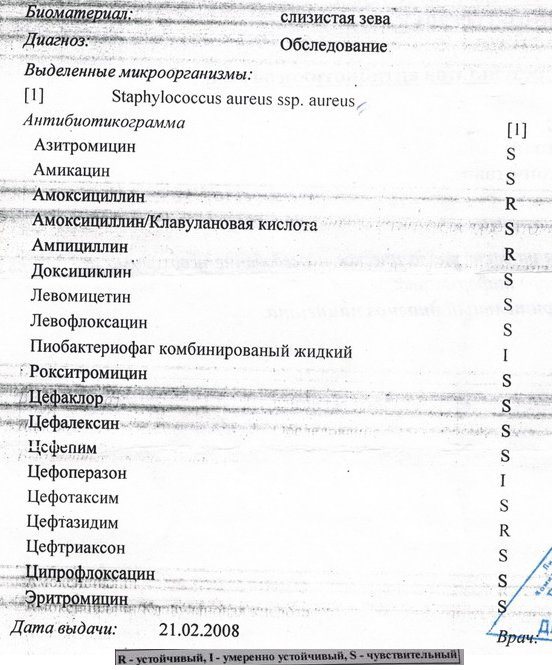
throat swab test results
Options for the results of a throat smear examination:
- A negative culture result for microflora means there are no causative agents of bacterial or fungal infection. In this case, the cause of the pathology is viruses, not bacteria or fungi.
- A positive culture result for microflora indicates a growth of pathogenic or opportunistic bacteria that can cause acute pharyngitis, diphtheria, whooping cough and other bacterial infections. With the growth of fungal flora, oral candidiasis develops, the causative agent of which is biological agents of the 3rd pathogenicity group - yeast-like fungi of the genus Candida.
Microbiological examination of the throat and nose flora makes it possible to determine the type of microbes and their quantitative ratio. All pathogenic and opportunistic microorganisms are subject to complete identification. The result of laboratory diagnostics allows the doctor to correctly prescribe treatment.
When is a smear prescribed?
A throat swab can be prescribed by specialists for a preventive examination of a patient when undergoing a medical examination before employment in a place related to the food industry, working with children, in hospitals and other similar places. That is, in cases where the work involves people or food products. Based on the results of such an analysis, doctors give an opinion on whether the person being examined is healthy and whether he can apply for a certain position. It is also important for all pregnant women to take a throat swab to prevent the occurrence of diseases that can complicate the course of pregnancy or even terminate it.
This analysis is performed on children in preparation for visiting a kindergarten or nursery in order to prevent outbreaks of infectious diseases in children's groups. Similar smears are also needed during hospitalizations for various surgical interventions.
Content:
- When is a smear prescribed?
- Preparing for the study
- How the research works
- Interpretation of smear results
In this case, they will avoid unnecessary complications of the rehabilitation period that may arise due to microorganisms living on the mucosa.
If there is contact with infected people who carry contagious microbial diseases, in order to avoid the occurrence of an epidemic and further spread of the disease, a throat swab procedure is also carried out.
If during treatment it is necessary to accurately select a drug that affects pathogens, then a smear will help to accurately identify and treat them. Smears are also taken for sore throats and various diseases of the ENT region. Thus, we can say that a smear is able to demonstrate the presence or absence of pathogenic bacteria in the body and accurately identify them in order to select treatment tactics.
